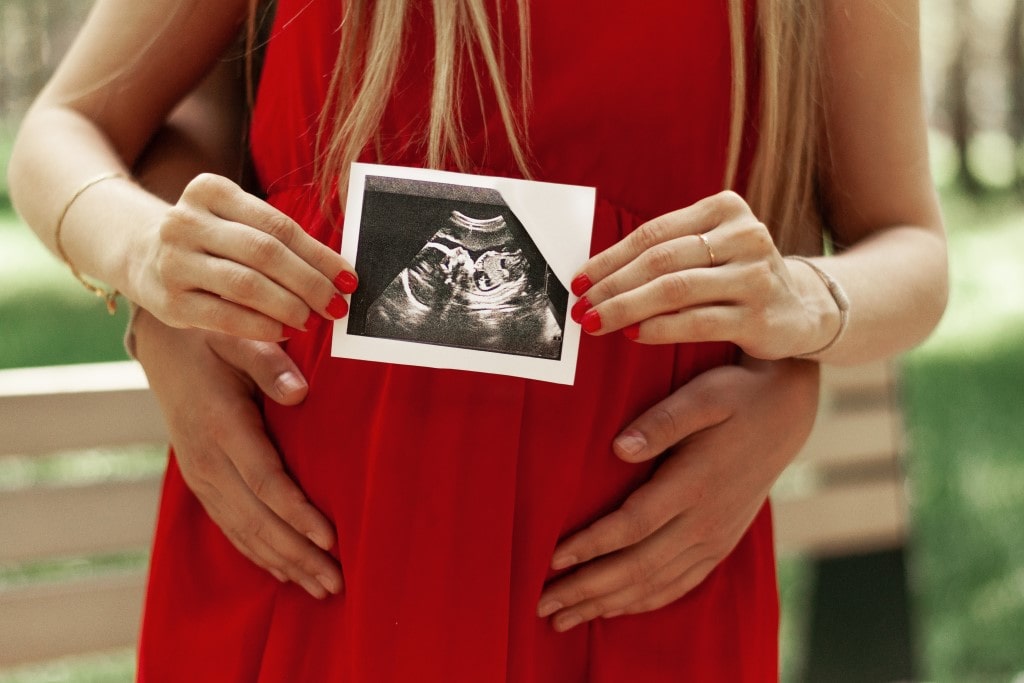Patient Information
Second Trimester
The second trimester is approximately week 13 to week 27 inclusive. In this period hopefully some of the morning sickness nausea and vomiting are subsiding and in general you are feeling a little better. It is also very likely at some point in this time that you will start to feel some movements from your baby. On the other hand, you may also start to notice an increase in aches and abdominal pains. We will be meeting with you approximately every four weeks and guiding you through the recommended tests and scans as well as answering any questions you may have.

Summary: Feeling your unborn baby move for the first time is a tremendously exciting time. But when you feel those first movements will vary between mothers and between pregnancies.
Fetal movements are exciting and are a great source of reassurance that "everything is progressing". But when you feel those first movements will vary. In general most women feel the first movements of their unborn baby between week 16 and week 25. The sensation (particularly early on) can be hard to describe but is commonly described as flutters, butterflies or nervous twitches. First time mothers may not feel anything until much closer to week 25, whereas in subsequent pregnancies movement may be felt closer to week 16. At this time the movements will be infrequent, every now and then - but they will get stronger and more frequent as the pregnancy progresses. The RCOG have produced a brochure on Your baby’s movements in pregnancy.
Summary: Sleep on your side. Don't be concerned if you wake up and find yourself on your back, just roll to your side and go back to sleep.
As your belly grows and your breasts get more tender you may find your normal sleeping position becomes quite uncomfortable. In addition, sleeping on your back while pregnant can cause a decrease in blood flow around your body so we strongly recommend you sleep on your side (most commonly with one or both knees bent). It doesn't matter which side you sleep on. You may find a body pillow helps with attaining a comfortable position to get some rest.
Summary: 1.4% of births are twins and 0.03% of births are triplets or more. The most important thing is to be healthy.
The rate of twin births in Australia is approximately 1.4% and the rate of triplet or more births is around 0.03%. It is difficult to know what to cover in a short section like this - but for starters check out the The Australian Multiple Birth Association (AMBA). They are a not-for-profit organisation consisting of multiple birth families. There are different types of multiples (Fraternal or Identical) and once you have triplets or more you can have different combinations of both. The most important thing that you can do is to be healthy - eat healthy, lots of fluids and maintain light exercise routines. The risks associated with a multiple pregnancy do change a little and we will discuss the detail with you during consultations. Early intervention can help if there are concerns with the progress of a multiple pregnancy so we may recommend increased monitoring particularly in late pregnancy and you may deliver slightly earlier. Also, be aware that if you are planning to fly that many airlines have different terms and conditions associated with multiple pregnancies so please check the terms and conditions carefully before booking.
Summary: Between 3% and 8% of pregnant women develop gestational diabetes. We may recommend you are tested for gestational diabetes between 24 and 28 weeks.
Gestational diabetes occurs during pregnancy when your body cannot cope with the extra demand for insulin production resulting in high blood glucose levels and occurs in around 3% to 8% of pregnant women. Most women are diagnosed using a pathology test, which requires a blood sample to be taken before and after a glucose drink. These tests are usually performed between 24 and 28 weeks and involves taking a blood test after fasting overnight. Next you have a drink containing 75 grams of glucose and blood is taken to be tested one and two hours afterwards. Gestational diabetes is managed by monitoring blood glucose levels, adopting a healthy eating plan and performing regular physical activity.
- Diabetes Australia have a section on Managing Gestational Diabetes
- The RCOG have produced this brochure on Gestational Diabetes
Summary: Pelvic Pain is common but can be managed. Early diagnosis and treatment can relieve your pain.
The RCOG have a great brochure on Pelvic Girdle Pain. Pelvic Girdle Pain is usually caused by the Sacroiliac joints and the Symphysis pubis joint moving unevenly. While in some circumstances it can be quite painful it is not harmful to your baby. It can be treated and we may refer you to a physiotherapist to provide the right treatment for your circumstances.
Summary: If other concerns arise we will discuss the implications with you.
There are a small number of unlikely concerns that may arise at this stage of pregnancy. The RCOG have produced a number of brochures and we have included them here for reference even though they have a low likelihood of occurring. Please be aware however that this list is by no means exhaustive.
